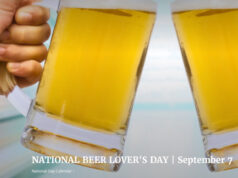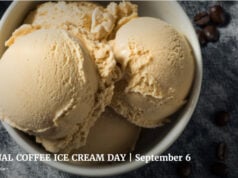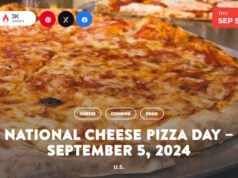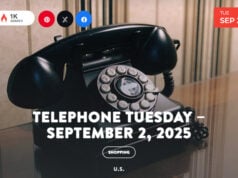
Updated February 14, 2024
National Graham Cracker Day is observed annually on July 5th. The graham cracker was originally invented as a “health food” as part of the “Graham Diet”. Developed by Presbyterian minister, Sylvester Graham in the early 1800s, graham crackers were originally made from whole-wheat graham flour with added bran and wheat germs. The minister believed this snack would curb a variety of sinful cravings.
- 1800s – Back in the 1800s sex was very taboo. People were told if they gave into any sexual desires they were evil and would suffer from headaches, epilepsy and in extreme cases, insanity
- 1800s – The Reverend Sylvester Graham believed carnal desires were inspired by the rich, fatty foods that Americans were consuming. So, his push to maintain a healthy, plant-based diet was in part to curb physical arousal.
- 1829 – Graham was, in fact, a real person: You may have noticed the name Graham is always capitalized when referring to the cracker, unlike other snack foods, this is named after a real person: The evangelical minister who created the recipe in 1829.
- 1837 – Graham published a pamphlet entitled, “A Treatise on Bread and Breadmaking,” and was hailed by the philosopher-poet Ralph Waldo Emerson as “the prophet of bran bread.”
- Enter Reverend Sylvester Graham. He fully supported the movement that sex should be forbidden and decided to invent the graham cracker to help out his fellow citizens.
- His popular Graham crackers were part of this, and while there is no scientific evidence to back up the correlation between eating this food and a lack of romantic intimacy, Graham amassed thousands of followers who believed in it.
- Commercially made Graham crackers date back to the 1900s: Before Honey Maid dominated the Graham cracker market, this snack was made by bakeries all over the United States.
- 1898 – many independent bakeries joined together to form the National Biscuit Company, aka Nabisco. It was through this merger that, by 1925, the Graham cracker we know and love today was created and sold under the name Sugar Honey Grahams. The name was changed to the currently recognized moniker Honey Maid in 1976.
- 1910s – Another company by the name of Loose-Wiles Biscuit Company starts producing and selling graham crackers.
- 1925 – Graham crackers are produced as Honey Grahams by the National Biscuit Company.
- 1927 – Graham crackers have been used in s’mores for 96 years: Ever since s’mores were supposedly created by the Girl Scouts in 1927, the tasty treat has involved the famous Graham cracker, as well as a toasted marshmallow and hunk of chocolate.
- The first recorded recipe for this dish appeared in the publication Tramping and Trailing with the Girl Scouts, though it didn’t gain mainstream popularity until the late 1960s and early 1970s.
- Sylvester Graham believed in diets and healthy eating. For one, he was a vegetarian, a strange concept at the time, and promoted foods one should eat to maintain physical, spiritual, and mental health.
- The original Graham crackers were kind of gross: the authentic article was actually rather bland, dry and unappealing. Made from unrefined flour, this biscuit-like substance lacked the flavor and finesse of its contemporary descendant.
- Modern graham crackers are made with bleached white flour and come in a variety of flavors including honey, cinnamon and chocolate.
- One of the most popular treats made with graham crackers is the S’more.
- 20% of Americans love s’mores so much that they make them all year round.
Sources:
Disclaimer
The information contained in South Florida Reporter is for general information purposes only.
The South Florida Reporter assumes no responsibility for errors or omissions in the contents of the Service.
In no event shall the South Florida Reporter be liable for any special, direct, indirect, consequential, or incidental damages or any damages whatsoever, whether in an action of contract, negligence or other tort, arising out of or in connection with the use of the Service or the contents of the Service. The Company reserves the right to make additions, deletions, or modifications to the contents of the Service at any time without prior notice.
The Company does not warrant that the Service is free of viruses or other harmful components












